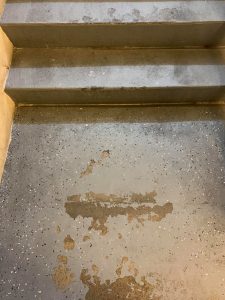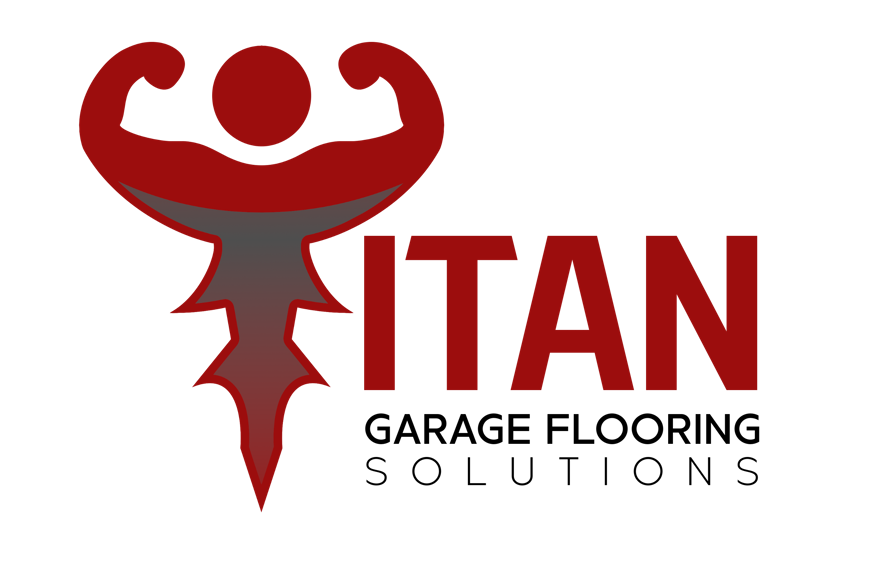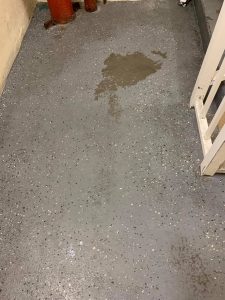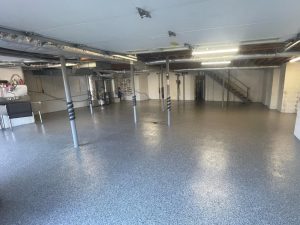When it comes to DIY garage epoxy kits, there are certainly pros and cons to consider. These kits offer a cost-effective way to enhance the look and functionality of your garage floor, but they also come with some potential drawbacks, including issues like fading and peeling. In this blog post, we’ll explore the advantages and disadvantages of using DIY garage epoxy kits, with a focus on the negatives related to fading and peeling.
The bottom line, the DIY kits you buy at the store are not intended to hold up. They fade, peel, and do not look anything like our professional Titan Polysporatic garage flooring solution. We looked at 3 floors alone this week that needed to be stripped and repaired. Don’t make the mistake of doing it yourself, and we hope this blog helps! The two images below are real DIY epoxy kits after time and wear have taken their toll.

Pros of DIY Garage Epoxy Kits:
- Affordability: DIY epoxy kits are generally more budget-friendly compared to hiring professional epoxy floor installers like us. This cost-effective option allows homeowners to upgrade their garage without breaking the bank.
- Ease of Application: Most DIY epoxy kits come with easy-to-follow instructions, making the application process relatively straightforward for homeowners with basic DIY skills. This eliminates the need for specialized equipment (like concrete grinders) or professional expertise.
- Enhanced Aesthetic: Epoxy coatings can significantly improve the appearance of your garage floor. They come in a variety of colors and finishes, allowing you to customize the look of your space to your liking.
- Easy Maintenance: Epoxy floors are easy to clean and maintain. Regular sweeping and occasional mopping are usually sufficient to keep your garage floor looking great.
- Increased Resale Value: A well-done epoxy garage floor can add value to your home, making it more attractive to potential buyers when you decide to sell.
Cons of DIY Garage Epoxy Kits:
- Limited Longevity: While epoxy floors are durable, DIY kits may not provide the same level of longevity as professionally installed systems. Over time, DIY epoxy coatings are more prone to wear and damage.
- Surface Preparation: Achieving a long-lasting epoxy finish requires thorough surface preparation. If the garage floor is not properly cleaned, repaired, and primed, the epoxy may not adhere well, leading to issues like peeling.
- Fading: One common issue with DIY garage epoxy kits is fading. Many of these kits use lower-quality epoxy formulations that are more susceptible to UV exposure. Over time, sunlight can cause the epoxy to lose its color and vibrancy, resulting in a dull appearance.
- Peeling: Poor surface preparation or inadequate mixing of epoxy components can lead to peeling. When the epoxy does not bond correctly to the concrete substrate, it can start to lift and peel away from the floor, leaving unsightly patches and compromising the overall integrity of the coating.
- Limited Warranty: DIY epoxy kits typically offer limited warranties compared to professional installations. If problems like fading or peeling arise, you may have to invest more time and money in repairs or recoating.
- Skill and Time Requirements: While DIY epoxy kits are designed for homeowners, they still require a certain level of skill and patience. Rushing through the application process or not following instructions carefully can lead to subpar results and issues like fading and peeling.
- No Professional Expertise: DIY kits lack the expertise and experience of professional installers. Professionals can address specific challenges unique to your garage, ensuring a more reliable and long-lasting epoxy coating.
In conclusion, DIY garage epoxy kits offer several advantages, including affordability, ease of application, durability, and enhanced aesthetics. However, they also come with potential downsides, such as fading and peeling, primarily due to the quality of materials and the importance of proper surface preparation. If you choose to use a DIY epoxy kit, be sure to follow the instructions meticulously and prioritize surface preparation to minimize the risk of these issues. Alternatively, hiring a professional epoxy installer may provide a more durable and hassle-free solution in the long run.



